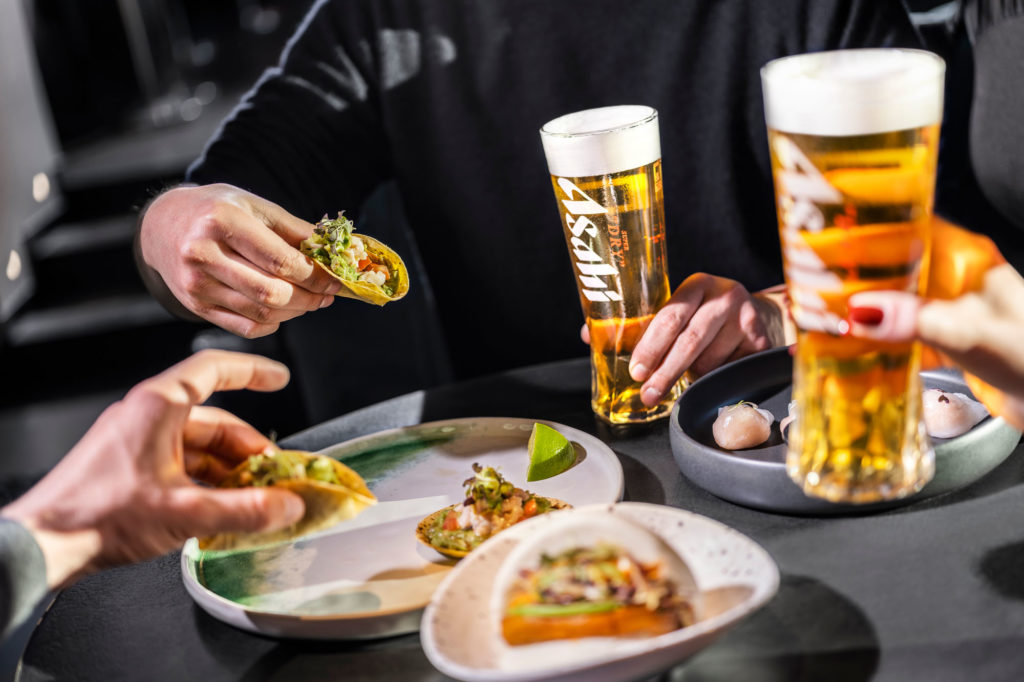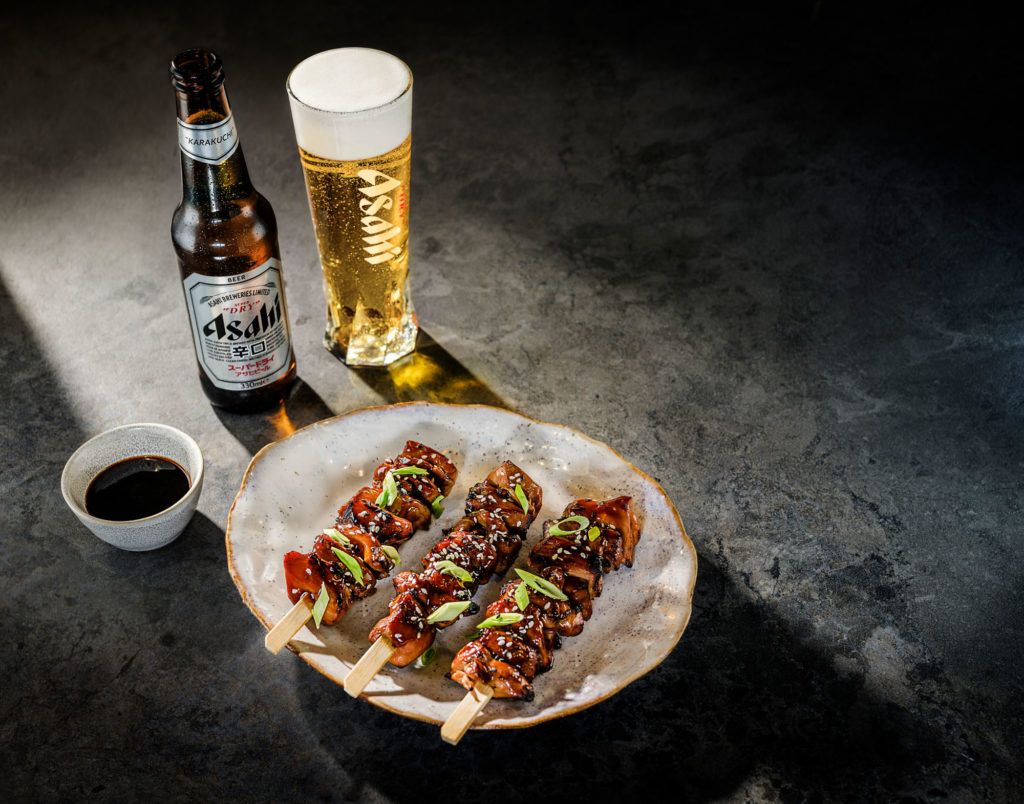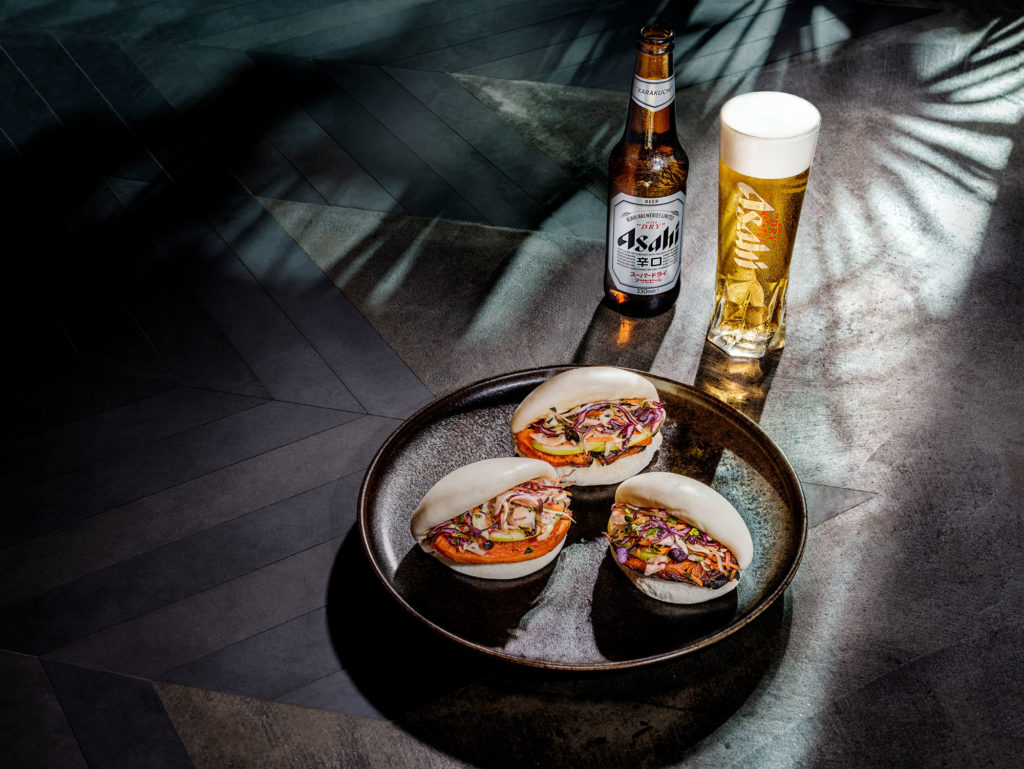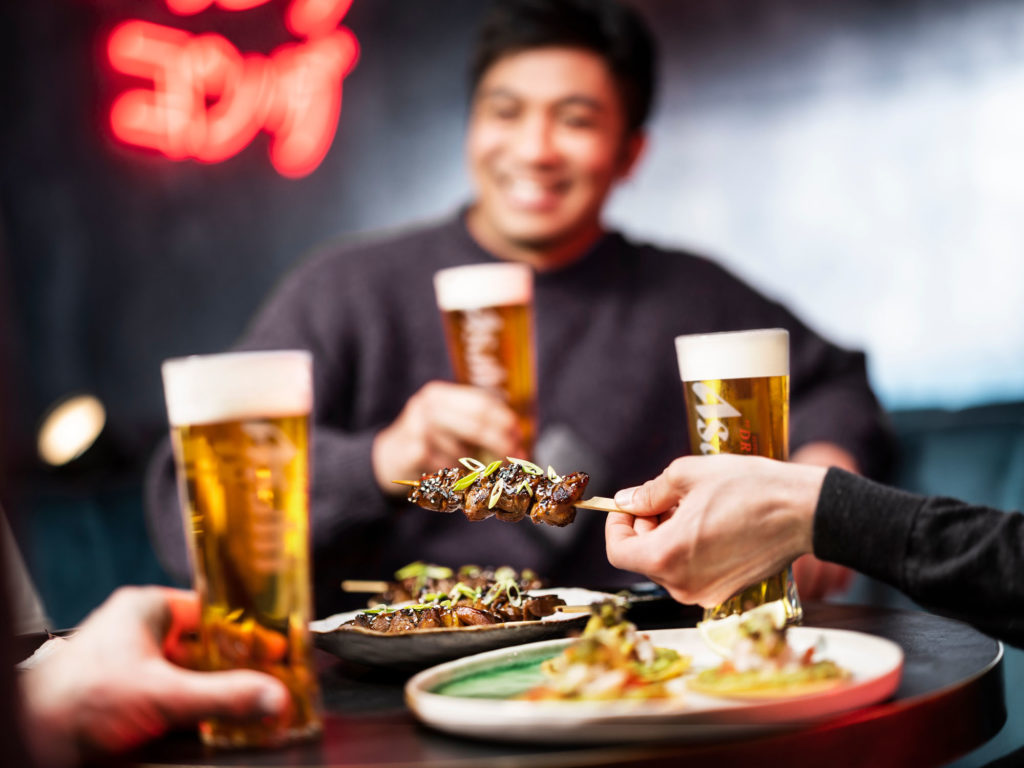What is Yakitori Omakase ?





Words: Shamim de Brún
Images Press
On November 23, Asahi, the Japanese Beer, is bringing Yakitori Omakase to our shores for a one-night-only 10-course event that comes with three beers, karaoke, and a DJ set with Marcus O’Laoire. But what on earth is Yakitori Omakase?
Outside of Japan, the average food enthusiast is familiar with sushi. They might say ramen when pushed. The nerdier among us might mention tempura, teriyaki, gyoza and Katsu curry. Some may know Asahi, Japan’s biggest beer. Others will know Sake, but the gut response is always sushi.
The rise in Japanese and Korean food popularity in Ireland in the past few years is undeniable. Finally, sushi arrived in a post-Chinese takeaway Ireland to a land willing and open to embracing the food they’d seen in the cult American TV shows we’d been devoutly ingesting since Nickelodeon came to our shores via cable TV. From there, we got Korean BBQ, Ramen haunts and more, but the more contemporary offerings of these culinary countries have been slow to arrive here.
The Breakdown
For the uninitiated: yakitori translates to “grilled bird”. It’s typically pieces of chicken on a stick, grilled. What could be more appealing to your inner caveman than this primal meat on a stick cooked over a fire? It sounds simple, but that’s deceptive. As every chef will tell you, simplicity means you have less room to cover up any mistakes.
Omakase is the Japanese term for chef’s selection. So Yakitori Omakase is a chef’s selection of all sorts of chicken on sticks cooked over charcoal.
Yakitori is universally beloved in Japan but is relatively obscure to us. There are more than 100 yakitori places in Tokyo, but this is Dublin’s first foray into the more niche side of the Japanese culinary arts. In Japan, typically, people don’t think about this cuisine’s greatness. Asahi wants to bring the beauty of yakitori outside of Japan. Dublin is full of energy and many cultures and is the best place to start.
Just fifteen years ago in Japan, the omakase-style of yakitori was a minority. It was still considered a delicacy but didn’t have much technique. Now, more chefs are interested in what we call nose-to-tail eating. Using each organ and each part of the chicken cooked in a way that suits it. That led to the birth of omakase-style yakitori restaurants in Japan, followed by New York.
The concept behind Asahi x Opium Rooms is to bring that here with a splash of Kareoke culture and a dash of dancing. Guests will experience this full-on traditional meal using the best Irish free-range chicken, cooked live over Binchotan Charcoal on Konro grills paired with Asahi beer. Tickets are on sale now for fifty-five euros, including the booking fee.


How It’s Done
When you eat Yakitori Omakase, you start with something light and build up to something more decadent, something fattier. Just like you’re supposed to with sushi or a wine tasting.
The toppings and accompaniments are seasonal. Sometimes fruity, but primarily vegetables round off the skewers. With the chicken, there’s a skinny season and a fatty season. Most people have never tried the more unusual parts of the chicken that dominate in yakitori. Asahi’s mission here is to show them the beauty of the chicken.
By separating all the chicken parts with specific cuts, the chefs bring out the flavour and characteristics of each piece of the meat. How each part cooks is different, so when I put the meat on the skewer, I calculate the thickness and the angle and everything so the chicken will taste the best. It takes a chef who knows everything about the chicken and the grilling process.
Omakase-style dining means the chef can see the guest’s face; performance is part of the experience. It means the kitchen and the customer’s side are in one unit, a complete dining experience.


The Finesse
Typically, yakitori consists of many different preparations but is mainly seasoned with salt or tare. Tare is a soy-based sauce which typically incorporates dashi and KombuKombu. Dashi is a broth based on smoked bonito flakes, and KombuKombu is a combo of seaweed, vinegar, and sake. It’s not just bare naked chicken parts on a stick, though. Instead, the different cuts are basted, glazed, sauced, lacquered, or infused tare to heighten the chickens’ natural textures, fats and crispy bits.
In addition to salt and tare, a few alternatively acceptable toppings find their way onto yakitori skewers. There’s shiso leaf and umeboshi (pickled plum). Yakitori options can feel limitless, with skins, tails, combs, and wattles represented in various permutations.
In the Omakase tradition, all grilling is over charcoal. If we’re leaning all on the ‘authentic’ end, the ultra-hard binchōtan type of Japanese charcoal.
Unlike traditional Irish charcoal, which is processed into uniform black lumps, binchōtan is made from ubame oak. This is a unique Japanese oak harvested from the mountain forests of Kishu. Binchotan is generally considered by chefs to be the best charcoal in the world. Industry heads praise it for being exceptionally long-burning, odourless, and smokeless. If you believe the lore, the wood’s density creates an incomparable heat with the endurance of a stallion, allowing for an even high temperature when grilling.


The Authentic Match
Pivoting back to the chicken. Yakitori is a nose-to-tail-eating godsend. It prises cuts taken from the whole bird for their varying beyond-run-of-the-mill flavours and textures. You won’t see the standard boneless, skinless chicken breast on this menu.
Industry heads often say that what grows together goes together, a simple aphorism that easily extends to yakitori and Asashi Super Dry. The spicy, umami undertones of this modern Japanese style pairs brilliantly with the refreshing and crisp taste of Asahi Super Dry beer. The golden rule of matching a beer with a dish is remembering to consider the relative intensity of flavour between pint and plate. The more flavorful a dish’s ingredients and cooking techniques, the more assertive a beer needs to be to match. Asahi assets itself brightly and brings the vibrant acidity that completes and balances the yakitori dishes that are brimming with salt, fat, heat and umami.


At this Asahi event, the chefs lean into the never classics. People heading in for anything other than their first rodeo will see the familiar sights under the new guises of tebasaki (wing) and Kashiwa (thigh), alternated with bits of Japanese leek (Negima). The menu also features delicate chicken meatballs (tsukune). The more adventurous will look forward to Reba or chigimo (liver), hatsu (heart), and sunagimo (gizzard).
The best way to enjoy yakitori is the omakase-style. Omakase sushi has been known in Japan forever, but in the wider world – Ireland included it’s just the last ten years that people have understood that as the best way to eat it. Of course, things take time, but I reckon yakitori omakase will be the toast of the town after this event.
Please Drink Asahi Responsibly.
Visit drinkaware.ie for more info






